 I first met Banadda when visiting Busoga (eastern Uganda) in 1987 after an absence of some 19 years during which time Uganda (and Busoga especially) suffered horrendously from the lawless and chaotic rule of Idi Amin and after him Milton Obote. The successive rampages of both armies, along with attacks from rebels to the north and east, made life incredibly difficult for the people in Busoga.
I first met Banadda when visiting Busoga (eastern Uganda) in 1987 after an absence of some 19 years during which time Uganda (and Busoga especially) suffered horrendously from the lawless and chaotic rule of Idi Amin and after him Milton Obote. The successive rampages of both armies, along with attacks from rebels to the north and east, made life incredibly difficult for the people in Busoga.
Banadda was then Culture Officer for Iganga district, having graduated in Fine Arts at Makerere University four years earlier. He proved to be an invaluable and stimulating companion during my research, taking me to visit the best of Busoga’s traditional musicians and acting as an interpreter. He also volunteered to act as cameraman for me. We discussed a multitude of issues while on our journeys including his special interest in mythology and the traditional beliefs of the people.

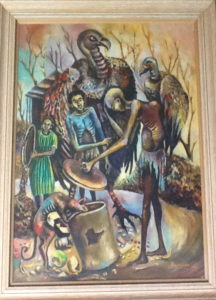
I was astonished on my first visit to his modest home in Iganga to find the walls of his living room covered with a huge variety of paintings and batiks, large and small. Many of the paintings explored the feelings of helpless despair of the people during the years of bloodshed and mayhem. When Western medicine was either absent or failing the people under those traumatic years they turned to traditional healers in an attempt to mollify the host of evil spirits whom they believed, could be afflicting them.
He proved such an able photographer that I left my camera with him when the fieldwork ended.
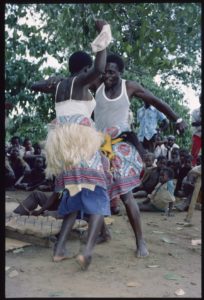
I suggested he come to the UK to give an exhibition of his work and in 1988 he did so, exhibiting in both Edinburgh and Glasgow where he sold many of the paintings and batiks he had brought. He left a dozen or so with us when he returned. I still have a number. He went home with a pocketful of cash and within a year or so he built up a good living (in addition to his official ‘culture’ work) taking school photographs. This enabled him to pay for a masters course in painting at Makerere His interest in traditional beliefs was followed up in his research for his PhD. Now he is head of painting at Makerere.
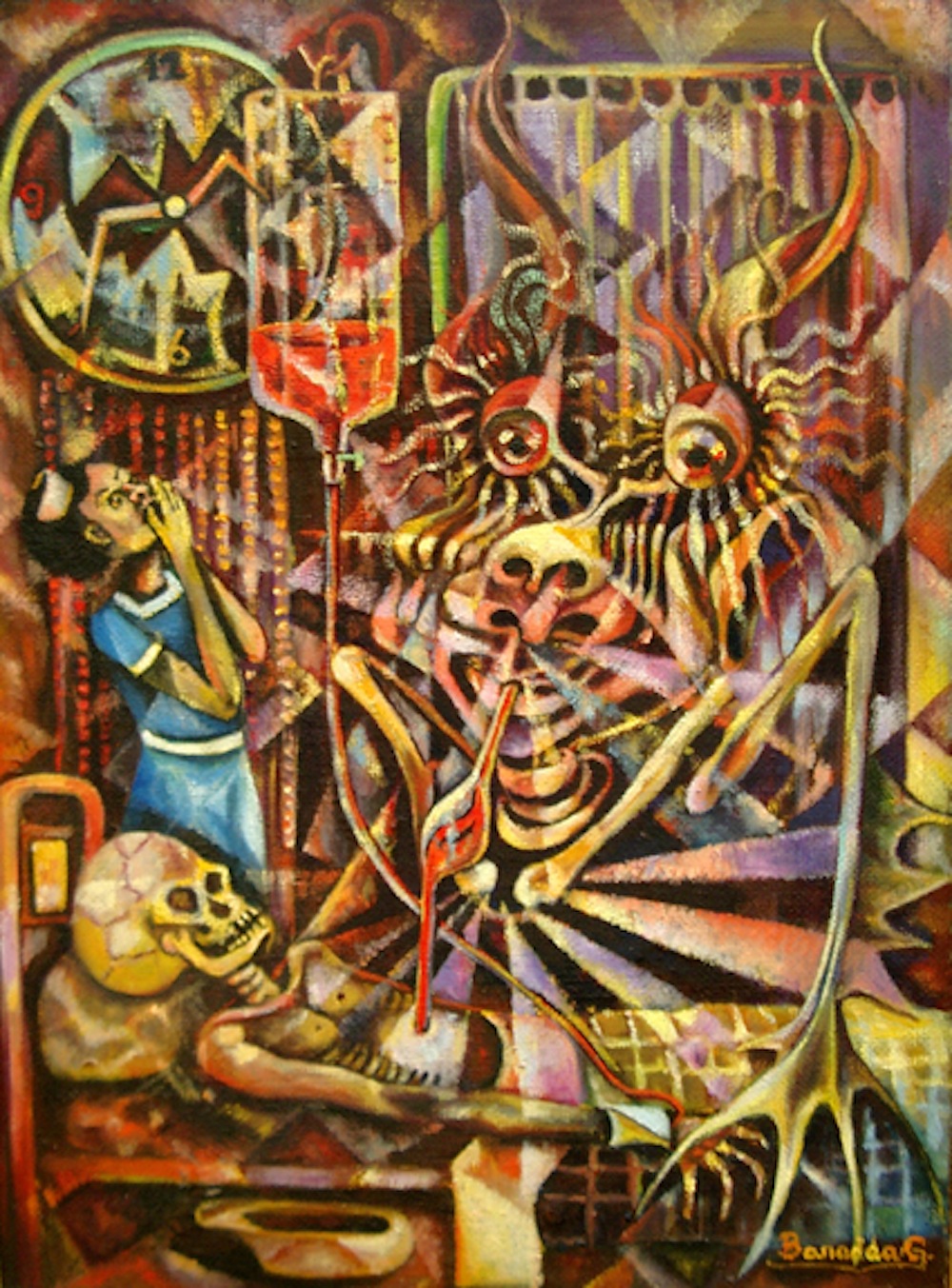
An early picture summming up what villagers often felt about the power of evil spirits is evident in the above painting. During the warring period when time itself seemed broken, the nurse cannot understand why her efforts at providing a transfusion to a victim of the troubles are of no use. She is unaware of the presence of a spirit simultaneously sucking out the blood of her patient. In Buganda, it is sometimes believed that modern Western medicine can achieve little. In Banadda’s own words -“The emptiness and hopelessness of the situation is normally taken over by superstition. At this level, patients are often withdrawn from modern hospitals by their relatives and taken to shrines for spiritual treatment”.
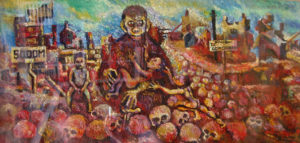
Of The Good Samaritan Banadda wrote: “During the 1980-1986 guerrilla war in Uganda, parents would abandon babies and children who could not flee with them fast enough from the killer soldiers. There was a story on TV just after the war, of a boy-child discovered in one of the forests by the soldiers. It was believed from the monkey-like conduct and behaviour of this boy that he could have been possibly raised by some sympathetic primate with a human heart”
BATIKS. Not all of Banadda’s artwork in those days dealt with traumatic events: as one way of supplementing his meagre government income, Banadda produced many charming and skilfully created batiks.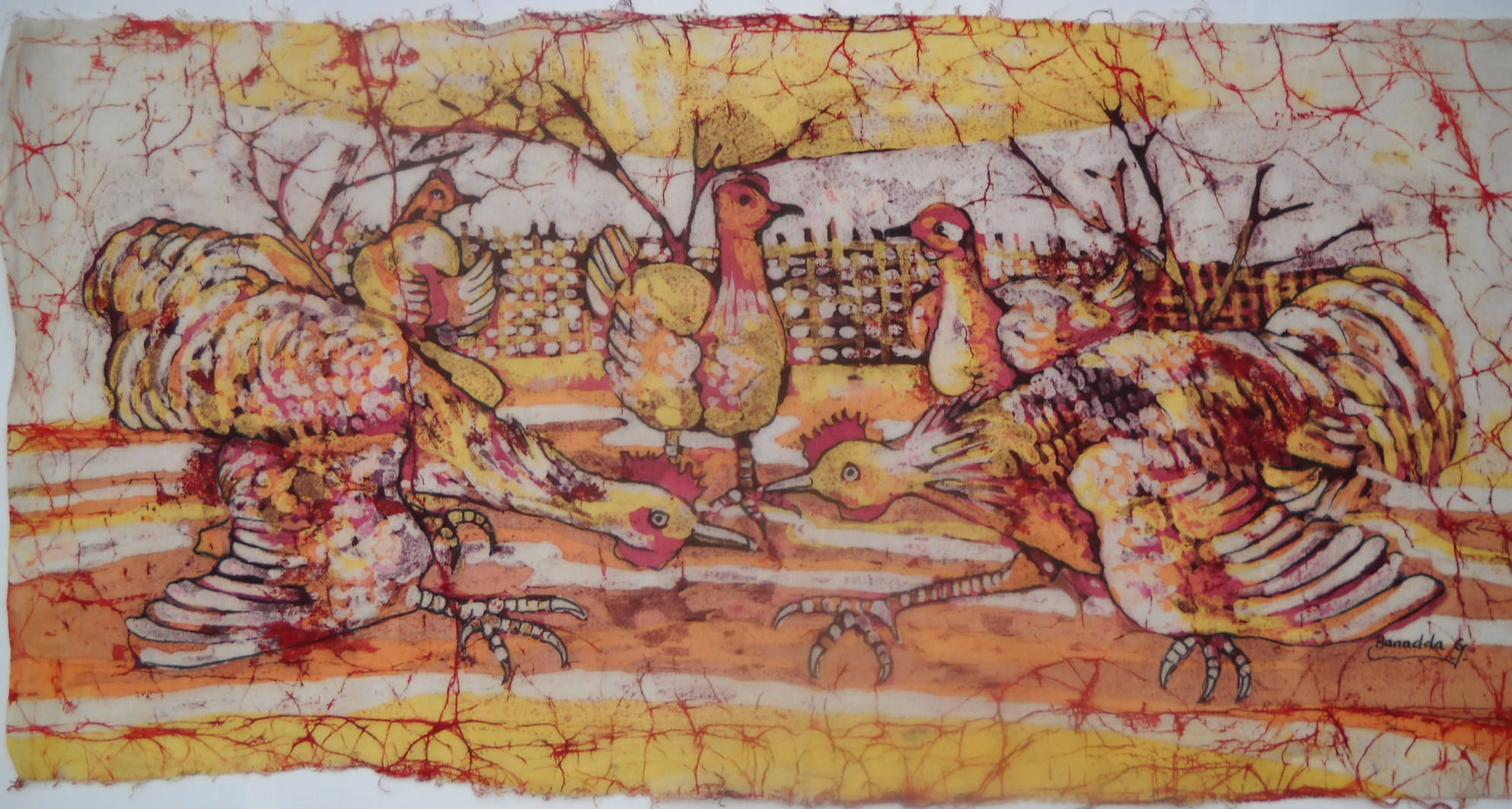
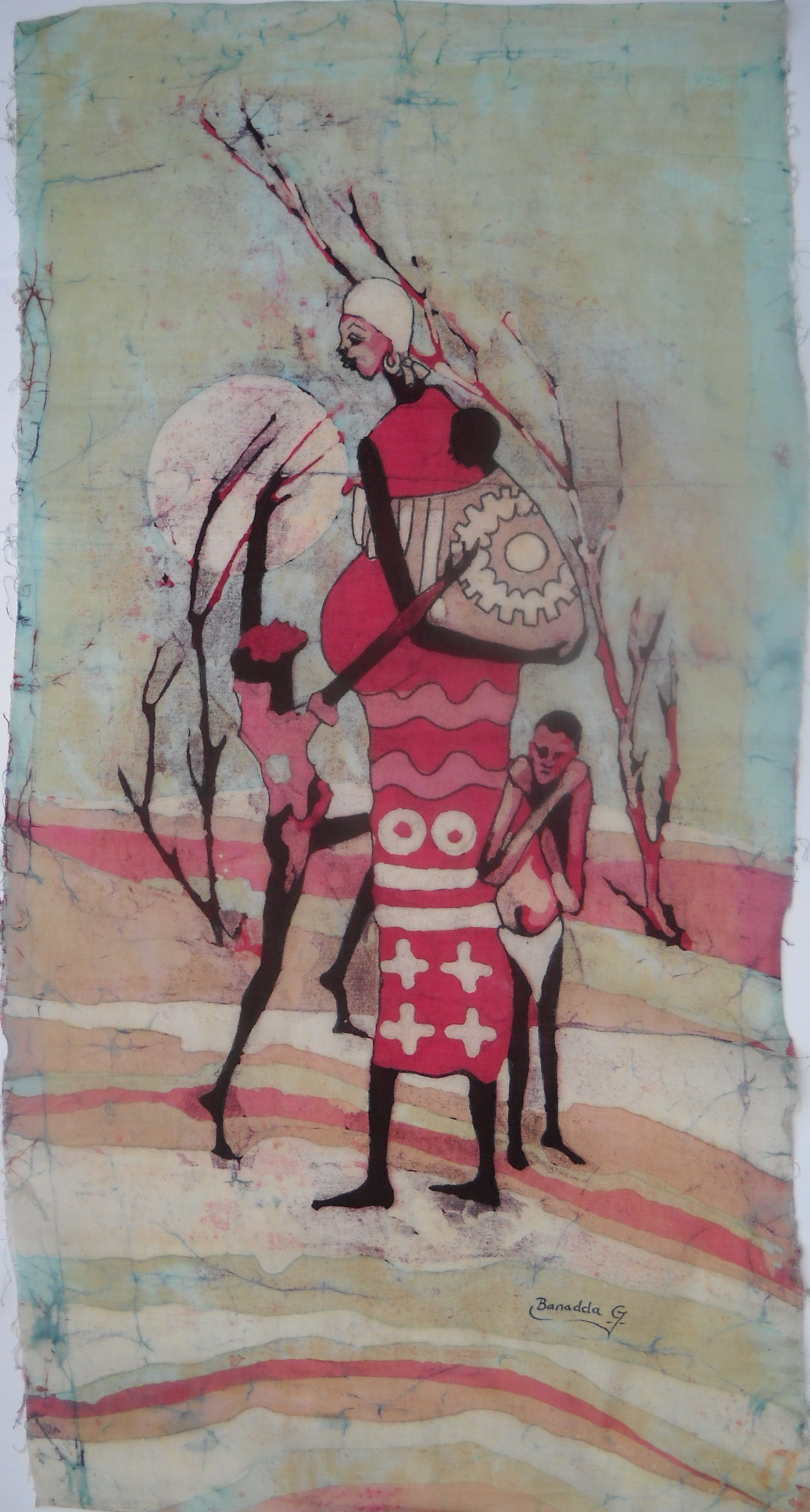
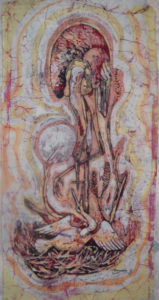
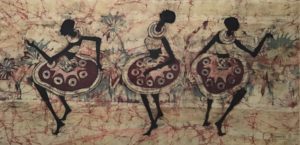
One oil painting I’m pleased to own is of a Kiganda dancer and shows him toying with cubist ideas. Most of the other pieces above are available for sale from me – (contact me for more information).
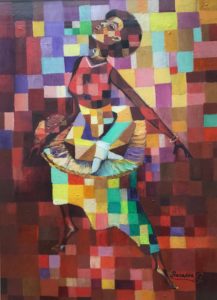
Since the 1980s his style has developed enormously. You can see a huge range of his more recent work if you simply Google ‘Banadda Godfrey’.
Enjoy!
Hi Pete
It was a real pleasure to see some more of his work. I have one of his batiks on my bedroom wall – grazing zebras.
G
TYes Gordon. He has such talent. thanks for the comment.
Keep up the support for Ugandan and African art in general. It’s for people like you why African artists have not given up on the practice.